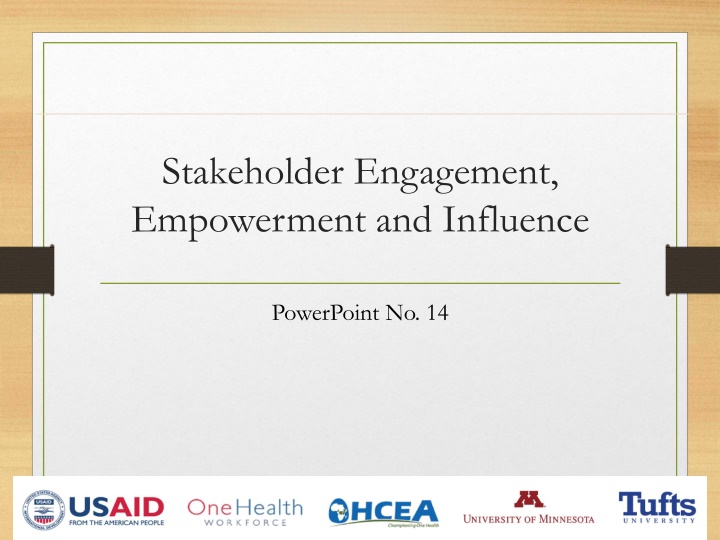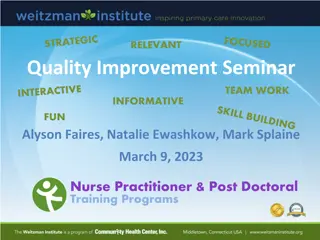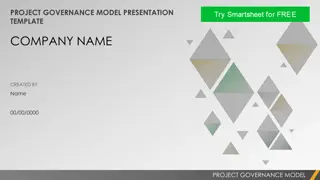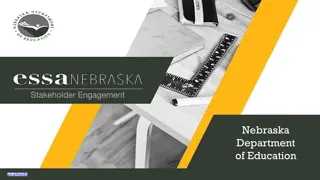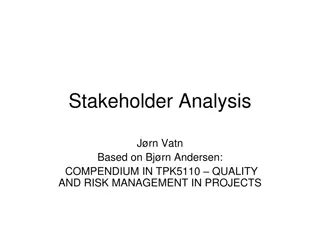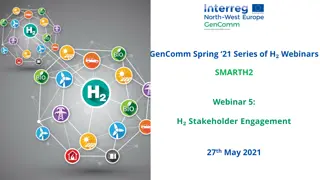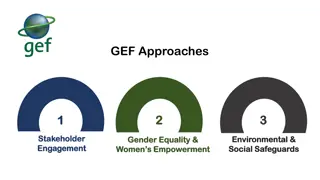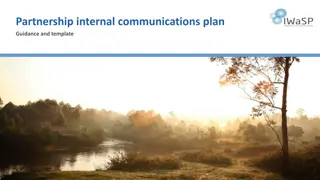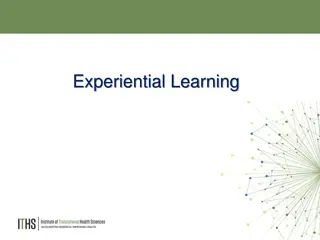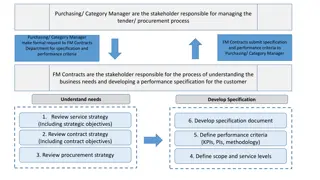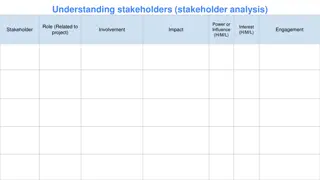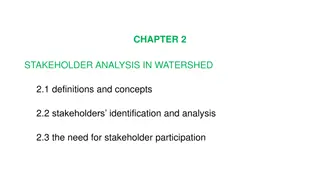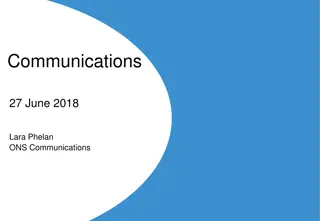Stakeholder Engagement Strategies for Success
Techniques for engaging, empowering, and influencing stakeholders effectively. Learn how to get stakeholders involved early, empower them to make decisions, and influence their perspectives. Build transparency, trust, and collaboration to drive successful outcomes.
Download Presentation

Please find below an Image/Link to download the presentation.
The content on the website is provided AS IS for your information and personal use only. It may not be sold, licensed, or shared on other websites without obtaining consent from the author.If you encounter any issues during the download, it is possible that the publisher has removed the file from their server.
You are allowed to download the files provided on this website for personal or commercial use, subject to the condition that they are used lawfully. All files are the property of their respective owners.
The content on the website is provided AS IS for your information and personal use only. It may not be sold, licensed, or shared on other websites without obtaining consent from the author.
E N D
Presentation Transcript
Stakeholder Engagement, Empowerment and Influence PowerPoint No. 14
Engagement Techniques Get stakeholders participating early on in the process Be clear about the objective of the engagement and strive for transparency with your stakeholders. Communicate frequently and utilize social networks/existing communication structures. Find out what is working, as well as their challenges; build from strengths if possible. Build a sense of urgency and form a guiding coalition to help move the change forward.
Empowerment Techniques Listen and acknowledge stakeholder concerns, ideas, etc. Put decision-making in the stakeholders hands. Facilitate the process, help to identify and support leaders as needed. Identify quick wins so that people see success/progress early on.
Influencing Techniques Understand and speak to what is important from their perspective. Identify your shared objectives. If possible, show rather than just tell. Use examples, demonstrations etc. to influence people s thinking, as well as their emotions. Expect influencing to take time. Remember, you are asking people to make a change.
